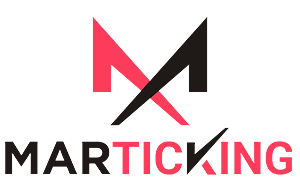Update Your Organization’s Marketing Strategy for a Digital World
In today’s hyper-connected world, where digital platforms reign supreme, the landscape of marketing has undergone a seismic shift. Traditional approaches are rapidly becoming obsolete, making it imperative for organizations to update their marketing strategies to thrive in the digital domain. This article delves into the essential components of revamping your organization’s marketing strategy for the digital age, focusing on key concepts such as digital marketing strategy, go-to-market strategy, marketing strategies, and content marketing strategy.
Understanding Digital Marketing Strategy
Digital marketing strategy encompasses a holistic approach to leveraging online channels to achieve organizational objectives. It involves harnessing the power of digital platforms such as social media, search engines, email, and websites to connect with target audiences, build brand awareness, and drive conversions. A robust digital marketing strategy is multifaceted, incorporating elements such as:
-
Target Audience Analysis:
Understanding the demographics, preferences, and behaviors of your target audience is fundamental to crafting an effective digital marketing strategy. Through data analytics and market research, organizations can glean insights into their audience’s needs and tailor their messaging accordingly.
- Channel Selection and Optimization:
With a plethora of digital channels available, choosing the right ones to engage with your audience is crucial. Whether it’s Facebook, Instagram, LinkedIn, or YouTube, each platform offers unique opportunities for reaching specific demographics. Optimization involves fine-tuning your content and ad campaigns to maximize reach and engagement on each channel.
3. **Content Development**:
Compelling content lies at the heart of any successful digital marketing strategy. From blog posts and videos to infographics and podcasts, creating valuable, relevant, and shareable content is essential for attracting and retaining your audience’s attention.
- **Search Engine Optimization (SEO)**:
Enhancing your online visibility through SEO techniques is integral to driving organic traffic to your digital assets. By optimizing your website’s structure, content, and meta tags, you can improve its ranking on search engine results pages (SERPs) and increase the likelihood of being discovered by potential customers.
- **Paid Advertising**:
Supplementing organic efforts with paid advertising can amplify your reach and accelerate your marketing objectives. Platforms like Google Ads, Facebook Ads, and LinkedIn Ads offer sophisticated targeting options that enable you to reach specific audience segments with precision.
### Crafting an Effective Go-to-Market Strategy
A go-to-market (GTM) strategy delineates how an organization will bring its products or services to market and capture market share. In the digital realm, a GTM strategy must seamlessly integrate with the overall digital marketing strategy to maximize impact. Key components of a robust GTM strategy include:
- **Market Analysis**:
Conducting a thorough analysis of the market landscape, including competitor analysis and market segmentation, is foundational to crafting a successful GTM strategy. By identifying market gaps, competitive advantages, and target customer segments, organizations can tailor their approach for maximum effectiveness.
- **Product Positioning and Messaging**:
Clearly articulating the value proposition of your product or service and crafting compelling messaging that resonates with your target audience is essential. A strong brand narrative that communicates your unique selling points can differentiate your offering in a crowded marketplace.
- **Distribution Channels**:
Determining the most effective distribution channels for reaching your target customers is a critical aspect of the GTM strategy. Whether it’s direct sales, online marketplaces, or strategic partnerships, selecting the right channels can streamline the path to market and enhance accessibility for consumers.
- **Sales Enablement**:
Equipping your sales team with the necessary tools, resources, and training to effectively sell your product or service is imperative. From sales collateral and product demos to customer testimonials and competitive analyses, providing support at every stage of the sales process can drive conversion and customer satisfaction.
- **Launch Plan**:
Developing a comprehensive launch plan that outlines key milestones, timelines, and promotional activities is essential for orchestrating a successful product or service launch. By coordinating marketing efforts across various channels and touchpoints, organizations can generate buzz, drive demand, and capitalize on early momentum.
### Leveraging Content Marketing Strategy
Content marketing strategy revolves around creating and distributing valuable, relevant, and consistent content to attract and retain a clearly defined audience. In the digital age, where information overload is rampant, compelling content serves as a beacon that cuts through the noise and resonates with consumers. Essential elements of an effective content marketing strategy include:
- Audience Persona Development**:
Developing detailed audience personas that encapsulate the characteristics, needs, and pain points of your target audience is foundational to crafting relevant content. By understanding your audience’s motivations and preferences, you can tailor your content to address their specific challenges and interests.
- **Content Calendar and Planning**:
Creating a content calendar that maps out the topics, formats, and distribution channels for your content ensures consistency and relevance. Whether it’s blog posts, videos, or social media updates, planning ahead enables organizations to maintain a steady cadence of content delivery and stay top-of-mind with their audience.
- **Storytelling and Brand Narrative:
Storytelling lies at the heart of effective content marketing, allowing organizations to connect with their audience on a deeper level and forge emotional connections. By weaving a compelling brand narrative that resonates with their values and aspirations, organizations can cultivate brand loyalty and advocacy.
- **Multichannel Distribution**:
Maximizing the reach and impact of your content requires strategic distribution across multiple channels. Whether it’s publishing blog posts on your website, sharing videos on social media, or contributing articles to industry publications, diversifying your distribution channels enables you to reach a broader audience and amplify your message.
- **Performance Measurement and Optimization**:
Continuously monitoring the performance of your content through key metrics such as engagement, conversion rates, and social shares is essential for refining your content marketing strategy. By analyzing data insights and feedback, organizations can identify trends, iterate on content formats, and optimize their approach for maximum effectiveness.
Conclusion
In conclusion, updating your organization’s marketing strategy for the digital age necessitates a comprehensive approach that integrates digital marketing strategy, go-to-market strategy, marketing strategies, and content marketing strategy. By leveraging the power of digital platforms, crafting compelling narratives, and delivering value-added content, organizations can connect with their audience, drive engagement, and achieve their marketing objectives in today’s dynamic landscape. Embracing innovation, staying agile, and prioritizing customer-centricity are key tenets of success in the ever-evolving world of digital marketing.


